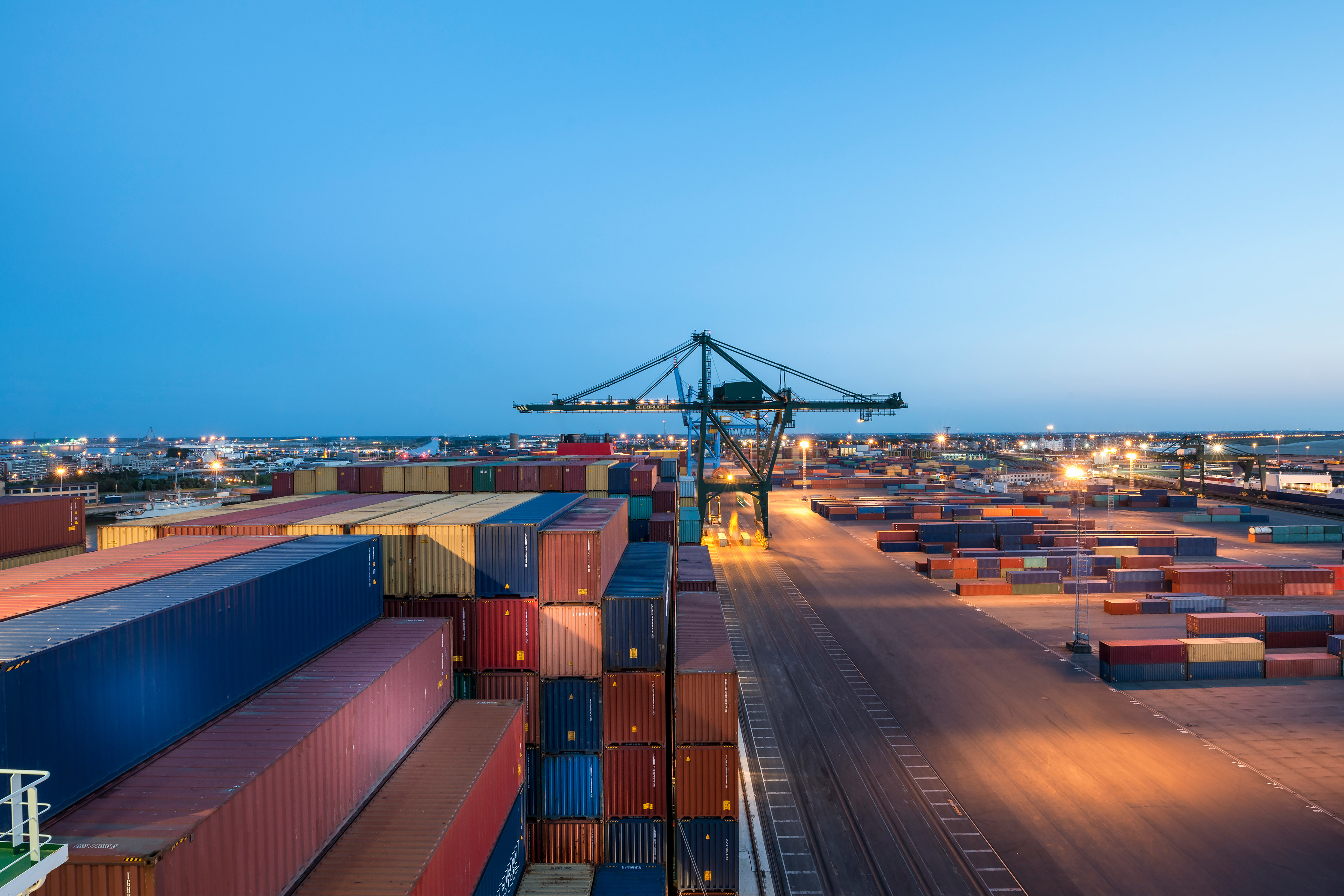EY refers to the global organization, and may refer to one or more, of the member firms of Ernst & Young Global Limited, each of which is a separate legal entity. Ernst & Young Global Limited, a UK company limited by guarantee, does not provide services to clients.
How EY can Help
They should consider the causes of this expected inflationary and higher interest rate environment to answer that question. The consensus among the mainstream press and economists is that there are at least four main drivers — first, the recent shift to "re-globalization" or bloc trading, which will likely replace the current supply chain model heavily dependent on China as the world's low-cost factory floor. Second is a declining population in the world's advanced economies (East and West), leading to citizenries with fewer working-age adults and more retirees. Third, the end of the deflationary effects of the e-commerce revolution favored the most efficient producers and sellers of consumer products by offering consumers full transparency and comparison shopping. Finally, a global trend to higher defense spending in the wake of the Ukranian War, shifting investment from “butter to guns” and contributing to inflation as defense-related production does not create services and goods consumed by households.
Each of these drivers has its own implications. If the new era of "re-globalization", often referred to as "globalization 2.0" or "deglobalization," leads to bloc trading and reduced dependence on China, it will come at a high cost. Shifting supply chains, investing in new infrastructure, dealing with redundancies, and having lower manufacturing capacity will make these new supply chains less efficient and the most expensive they have been since the 1970s, when China became a significant player in global trade. Global trade has already been declining, with exports accounting for 31% of the world's gross domestic product (GDP) in 2008 but dropping to 26% by 2020.
Demographically, China recently experienced its first decrease in population in 60 years, and the working-age population in the US is predicted to grow only by 0.2% from 2020 to 2030. As the developed world's population shifts and the number of retirees increases, inflation is expected to rise because retirees consume more than they produce. This situation is particularly challenging in Western Europe and Japan.
In the digital era, 14% of retail sales now happen online, and commerce has contributed to lower prices by allowing consumers to compare prices and choose the cheapest option. However, this trend has somewhat reversed as online prices have risen by 2% since March 2020. While advancements like artificial intelligence, quantum computing and 3D printing are expected to drive new growth and productivity, the benefits of transparent and competitive online pricing have likely reached their limit.
Considering economists' predictions for ongoing inflation and the readiness of central banks to raise interest rates and control the money supply to combat inflation, we need to assess the effects on transfer pricing and operating models. These effects can range from minor and computational, to highly strategic and relevant, to how companies allocate and form capital. The following are important considerations in an environment of high or increasing interest rates:
1) Working capital adjustments in transfer pricing analyses under the comparable profits method (CPM) as described in Treasury Regulation 1.482-5
One common adjustment performed in CPM analyses, the most common method employed globally by taxpayers and authorities alike, requires contrasting trade terms for receivables, payables and inventory policy-level differences between taxpayers and comparables. The logic goes as follows: in a competitive market, if I am a distributor and offer customers 180-day payment terms while my competitor offers 30-day payment terms, I need to increase my prices and resulting profits to make up for interest expenses that I incur to fund those longer terms. This guarantees that external investors in a competitive market earn the same return on investment regardless of payment terms. During the last 15 years of quantitative easing with low-interest rates, these adjustments did not impact a transfer pricing analysis in terms of materially moving operating margins post-adjustment. This will no longer be the case if we enter an era with sustained 5% federal funds rates. Taxpayers could be in for surprises if they skip or inappropriately conduct these working capital adjustments. To make it worse, transfer pricing has cliffs, too — in the application of the CPM in the US; for example, if an inbound taxpayer is below the lower quartile of an arm's-length range on a one-year to one-year basis, the taxpayer is adjusted by the IRS to the median, not the lower quartile. This means that a minor mismatch in a working capital adjustment could result in a big tax bill.
2) Bonafide financial instruments
Similarly, for bona fide loans, advances and cash pool arrangements, higher interest rates raise the stakes significantly on mispriced, unidentified and underpriced financial instruments. While in the past, a rate of 100 basis points might not materially move the needle on an analysis, 500 to 800 basis points might.
3) Parent guarantees and performance guarantees
These are sometimes overlooked by tax departments or are known only to the treasury functions of our clients. In an era of nearly zero interest rates, the value of these guarantees was nominal. In a future world, these guarantees could become very valuable.
4) Foreign exchange gains and losses: transactional, translational and economic
As interest rates move globally, exchange rates generally move in tandem. Countries with rising interest rates attract capital and, absent sterilization, see rising home market currencies. This is a well-known economic principle known as the interest rate parity theorem. Exchange rate movements of a material type create gains and losses. In operating models, who bears them? Should contract manufacturers or limited risk distributors on the appreciated side of an accounts receivable or accounts payable trade bear some of the losses or keep the gains?
5) Servitization models
Corporate treasurers, faced with high borrowing costs, may opt more and more for X-as-a-service models wherein they do not borrow and buy devices, equipment and other capital goods but rather enter into short-, medium- or long-term leases hoping to hedge bets that rates fall, that technologies replace the need for the equipment, or that other factors might manage the need to buy equipment. This type of model originated in prior periods of high inflation and interest rates, such as the late 1970s and early 1980s, when airplane engine manufacturers began to offer "power by the hour" to airlines rather than asking airlines to fund the expensive engine purchase upfront
6) Intangible property (IP) valuation, project finance decisions, and carrying costs of investments
A central component of any discount rate is the risk-free rate. It is typically indexed to the 10- or 20-year US Treasury Bond rate. Rising long-term interest rates and a return to normal increasing yield curves can simultaneously lower the cost to exit IP, reduce the value of future investments, and reduce the value of assets on balance sheets. Thus, this could have pervasive effects on operating models.
7) Asset light
An adjunct to servitization is the notion of "asset light", wherein companies prefer to spin off capital-intensive operations because of rising debt service costs. This trend has historically been driven by companies' desire to focus on their core competency – say design; obtain competing bids by spinning off affiliated operations to open market participants. Asset light models should be assumed to increase in popularity in a rising interest rate environment.
8) Rise in FDI
Medium-term appreciating of currencies arising from higher interest rates is generally held to reduce exports but give rise to an increase in foreign direct investment (FDI). Hurting exports is easy to explain as the country's goods become more expensive to foreign buyers after a period where old orders are fulfilled. The increase in FDI comes from foreign investors perceiving the rising currency market as a good store of value for when it is time to sell the investment and convert it back to their home currency. So, a more than transitory move to higher US interest rates and a related rising dollar value could give rise to more FDI into the US by foreign multinationals.






